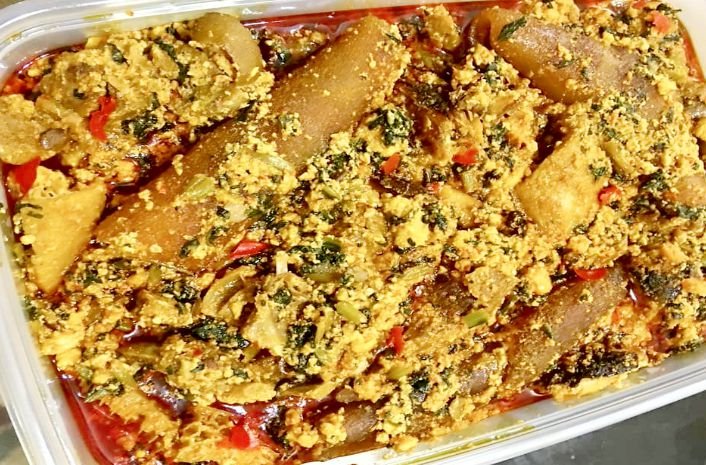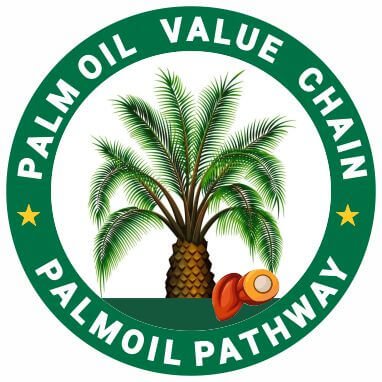Uses of red palm oil span cooking, skincare, supplements, and eco-friendly products. This guide breaks down how it’s applied in kitchens, cosmetics, and industries worldwide.
When you hear “red palm oil,” you might think of bold color and rich flavor. But have you ever stopped to think about how it’s used in your daily life?
From your kitchen to your skincare routine and even in industries you rarely think about, red palm oil shows up in ways you wouldn’t expect.
This bright oil, pressed from the fruit of the oil palm tree, is packed with carotenoids and used around the world for more than just nutrition.
In this post, you’ll walk through the real uses of red palm oil, not the benefits or origins, just how it’s applied in cooking, cosmetics, supplements, and more.
If you’ve ever wondered where this oil fits into your life or the global market, keep reading.
You might recognize it in more places than you imagined. If you are new to palm oil, start here.
Recommended: The Place of Red Palm Oil in Cooking
Table of Contents
- Culinary Uses of Red Palm Oil
- Cosmetic and Skincare Applications
- Medicinal and Supplement Uses
- Industrial and Household Uses
- Livestock and Animal Feed
- Uses in Infant and Maternal Nutrition
- Conclusion
- Frequently Asked Questions
Culinary Uses of Red Palm Oil

Red palm oil brings flavor, color, and texture to your food. Used worldwide in homes and factories, it shapes both traditional recipes and modern processed products you eat every day.
Traditional African Cooking: A Base for Bold and Flavorful Meals
If you’ve ever cooked jollof rice, egusi soup, or yam porridge, you know red palm oil sets the tone. It’s more than a cooking oil; it’s a foundation.
Its deep red color adds warmth to the plate, while its earthy flavor gives each bite character.
Thanks to its high smoke point, you can fry or sauté without worrying about burning. It’s a trusted staple across West and Central Africa for a reason.
Brazilian and South American Dishes: Flavor That Runs Deep
In South America, red palm oil brings depth and richness to classic dishes like Brazilian moqueca.
You’ll notice how it blends with coconut milk and seafood to create a smooth, hearty stew.
It gives the broth a golden-orange glow and adds a savory layer you won’t get from other oils.
Its flavor holds up well with bold ingredients, making it perfect for Latin-style rice dishes, stews, and spicy sauces.
Southeast Asian Cuisine: A Natural Fit for Curries and Pastes
When you cook with red palm oil in Southeast Asian dishes, you’ll notice how it melts smoothly into spice blends and coconut milk.
Curries, chili pastes, and soups take on a rich texture and subtle sweetness.
It holds up under high heat and binds flavors together beautifully.
You’ll see it used in Malaysian and Indonesian recipes, where its color and consistency enhance both the look and mouthfeel of traditional meals.
Cooking Oil Substitute: For Frying, Baking, and Roasting
If you’re looking to switch up your cooking oil, red palm oil is a smart choice. It works well for frying eggs, baking vegetables, or roasting meats.
Its antioxidants and healthy fats make it a better option than some common oils. You also get a bonus: color and flavor.
Instead of a neutral oil that does nothing for taste, this one adds a gentle richness that complements both sweet and savory dishes.
Commercial Food Processing: Behind the Scenes of Your Packaged Foods
You might not realize it, but red palm oil is used in many of the packaged foods on your shelf.
Think instant noodles, margarine, and baked snacks. It keeps products stable, adds natural coloring, and improves shelf life.
Food companies love that it’s semi-solid at room temperature, which makes it easier to work with than liquid oils.
When you read ingredient lists, you’ll often find it listed as palm olein or palm shortening.
Related Posts
Is Red Palm Oil and Palm Oil the Same?
Understanding Organic Red Palm Oil
The Nutritional Value of Red Palm Oil
Health Benefits of Red Palm Oil
Why African Chefs Love Red Palm Oil
Cosmetic and Skincare Applications

Red palm oil does more than add flavor to food. You’ll find it in your beauty products too.
From skin creams to shampoos, it helps nourish, protect, and restore naturally.
Natural Moisturizer: Keeps Skin Soft and Hydrated
When you use soaps or lotions made with red palm oil, you give your skin a moisture boost. It works by sealing in hydration while supporting your skin barrier.
The rich fatty acids help calm dry areas and prevent flaking. If you deal with rough patches or dull skin, using body butters with red palm oil can help smooth things out.
It’s a gentle, natural way to keep your skin feeling healthy and cared for. See an in-depth post on red palm oil for skin.
Haircare Ingredient: Strengthens Hair and Soothes the Scalp
Your hair products may already contain red palm oil, and for good reason. Its vitamin E content supports scalp health and helps soften your strands.
Whether your hair is dry, damaged, or hard to manage, this oil brings back softness and strength.
Use it in shampoos or conditioners to reduce breakage and add shine. It blends well with other oils, too, making it a favorite in many clean haircare lines.
Anti-Aging Support: Targets Fine Lines and Skin Texture
If you’re trying to keep your skin firm and fresh, red palm oil can help. Its antioxidants work on the surface to fight damage from stress and pollution.
You’ll find it in night creams, serums, and facial oils. It helps improve elasticity and smooth out fine lines.
Applied regularly, it supports a more even skin tone and a healthy glow, without the heaviness that comes with synthetic products.
Related: Here is How Healthy Red Palm Oil Can Be
Medicinal and Supplement Uses
You might already know red palm oil as a cooking ingredient, but it’s also used in health and wellness.
From traditional remedies to modern supplements, it has found a wider purpose.
Nutritional Supplements: A Natural Source of Antioxidants and Fat-Soluble Vitamins
Red palm oil shows up in capsules, functional foods, and health drinks. When taken in moderation, it provides vitamin A, tocotrienols, and healthy fats that support your body’s daily needs.
If you’re seeking natural support for vision, immune function, or heart health, supplements made with red palm oil can offer that boost.
It’s easy to absorb and blends well with other nutrients, making it a useful base in many wellness formulas.
Traditional Remedies: A Go-To Ingredient for Folk Medicine
In many homes, red palm oil is used just like a balm. You might find it gently rubbed on the skin for relief from burns, rashes, or minor cuts.
This practice comes from generations of traditional healers who trust its soothing effect and natural composition.
You may not find it in pharmacies, but you’ll see it in local medicine cabinets where trusted home remedies still play a big role in daily care.
Herbal Carriers: Helps Blend and Absorb Natural Ingredients
When you mix herbs for natural treatments, red palm oil can help carry the ingredients into your skin or bloodstream.
Its texture allows for smooth application, while its fat content improves absorption of fat-soluble compounds.
Herbalists use it in creams, salves, and tonics. It helps keep homemade preparations stable and effective. If you’re blending natural ingredients, adding red palm oil can improve how the body responds to the mixture.
Industrial and Household Uses
You might be used to seeing red palm oil in your kitchen, but it also plays a quiet role in the products you clean with and the goods you use every day.
Natural Dye: Adds Color Without Synthetic Chemicals
Red palm oil gives products a deep, warm hue without relying on artificial colorants.
Its natural pigments are used in candles, soaps, and cosmetics to provide visual appeal and avoid harsh chemicals.
If you’re looking for eco-friendly goods that still look good on the shelf, products colored with red palm oil offer a clean alternative.
It blends easily into different bases and holds color well, especially in handmade or small-batch production.
Eco-Friendly Soaps and Detergents: Cleans Without Harsh Ingredients
You’ll find red palm oil in some natural cleaning products and handmade soaps. It creates a rich lather and works gently on skin and surfaces.
Brands focused on sustainability use it as a plant-based alternative to petroleum ingredients.
Its moisturizing quality makes it a favorite in personal care, while its stability helps in household cleaners.
If you prefer biodegradable options for your home, look out for soaps made with this oil.
Sustainable Product Base: Supports Cleaner Manufacturing Choices
When companies use red palm oil in manufacturing, they reduce their need for synthetic additives and petroleum-based fillers.
This helps lower the environmental impact of everyday products.
From waxes to conditioners and emulsifiers, red palm oil supports cleaner production without sacrificing performance.
You may not notice it on the label, but behind the scenes, it helps balance function and environmental care.
Choosing these products supports a shift toward greener production lines.
Livestock and Animal Feed
Red palm oil isn’t just for humans. It also helps improve animal diets. From poultry to dairy cows, farmers use it to boost feed quality, energy, and overall animal health.
High Energy Feed: Fuels Growth and Performance in Livestock
Red palm oil adds more energy to your livestock’s feed without needing to increase the amount they eat.
It contains digestible fatty acids like palmitic and oleic acid that support weight gain, stamina, and daily function.
You’ll notice better performance, especially in high-yield animals like dairy cows and broilers. With higher energy density, feed efficiency improves.
That means better returns on feed investment and healthier animals that reach their full potential faster.
Better Palatability: Increases Feed Intake and Improves Nutrient Use
Animals eat more when the feed tastes and smells good. Red palm oil brings a pleasant aroma and flavor that encourages higher intake.
Its deep color also adds visual appeal, which matters more than you might think.
When livestock enjoy their meals, they’re more likely to eat consistently and absorb nutrients better.
This helps reduce waste and supports steady growth, especially in young or stressed animals with specific dietary needs.
Farm Outcomes: Supports Reproductive Health and Milk Production
When red palm oil is part of the feed mix, you may see benefits beyond just weight gain.
Breeding animals often show better fertility rates and more stable reproductive cycles. In dairy farming, it can support higher milk yield and better fat content.
These results matter when you’re managing long-term productivity.
Red palm oil gives you a natural way to improve animal performance across the board without relying on synthetic additives.
Uses in Infant and Maternal Nutrition
Red palm oil plays a practical role in supporting the nutritional needs of pregnant women, nursing mothers, and growing babies.
It provides key vitamins and healthy fats that benefit early development.
Infant Formula Use: Supports Growth and Matches Human Milk Structure
You’ll find red palm oil used in many infant formulas because of its fat profile and natural nutrients.
It supplies provitamin A carotenoids and vitamin E, both needed for eyesight and immune strength.
Its fat composition also mimics that of human milk, helping babies digest it better. This supports early weight gain and energy needs.
By adding it to the formula, manufacturers improve both the nutrition and bioavailability of key nutrients for newborns.
Maternal Fortified Foods: Supports Pregnancy and Recovery
During pregnancy and breastfeeding, your body needs more nutrients. Red palm oil helps meet those needs.
It’s included in fortified foods for expectant mothers to provide extra calories and fat-soluble vitamins.
Vitamin E, in particular, supports your body’s defenses against oxidative stress.
You may also see red palm oil used in food aid programs to support mothers in regions where vitamin A deficiency is a concern.
It helps you stay nourished and recover faster postpartum.
Conclusion
You’ve now seen how red palm oil works its way into everyday life. From flavoring your food to softening your skin, this oil does more than many people realize.
You’ll spot it in traditional recipes, beauty routines, wellness supplements, and even eco-conscious products.
Its rich mix of vitamins and natural fats makes it useful in both kitchens and factories.
As you choose products or ingredients, pay attention to how they’re made.
Supporting brands that use responsibly sourced red palm oil helps protect people, animals, and forests.
This one ingredient connects culture, nutrition, and sustainability. Use it wisely, and it can add real value to your plate, your routine, and the planet.
Frequently Asked Questions
What are the common uses of red palm oil in cooking?
You can use red palm oil for frying, sautéing, and baking. It adds flavor, color, and natural antioxidants to both traditional dishes and packaged foods.
Is red palm oil good for skin and hair care?
Yes. It’s rich in vitamin E and beta-carotene, which support skin hydration, reduce dryness, and help restore shine and softness to your hair.
Can red palm oil be used in baby formula?
Red palm oil is added to infant formula to mimic the fat in breast milk and provide vitamin A and E, supporting early growth and development.
Does red palm oil have industrial or eco-friendly uses?
You’ll find it in soaps, detergents, candles, and cosmetics. Its texture and color help replace synthetic additives in products made for greener living.
References
I am Chimeremeze, a writer and researcher with deep-rooted experience in processing, consuming, and utilizing locally produced palm oil products, including red palm oil, palm kernel oil, and refined palm oil. Growing up in a community surrounded by towering palm trees, we embraced every part of this nature’s gift—drinking its wine, using the fronds for fencing, crafting brooms from its leaves, and turning its sturdy trunks into communal benches.
My passion for the palm tree and its countless benefits drives my research and writing, shedding light on its significance to West Africa and beyond. I also explore the impact of cassava, another staple crop that has shaped Africa and influenced the world.

